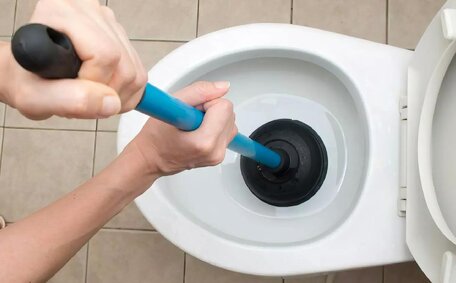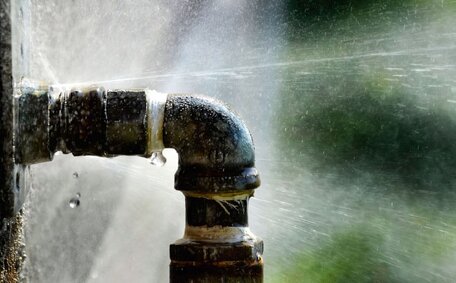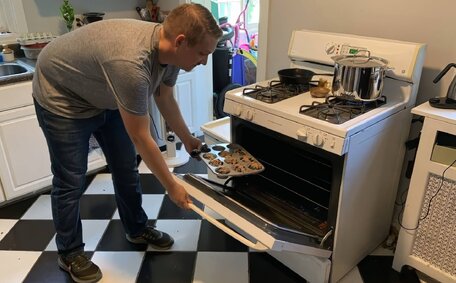Introduction to Soil and Sediment Pollution in Stormwater Drainage
Soil erosion and sediment pollution are growing concerns for stormwater drainage systems. When heavy rains fall, soil and debris can be picked up and washed into drains, pipes, waterways and infrastructure. Over time, this sediment builds up and causes major blockages.
Sediment comes from many sources - construction sites, agricultural land, urban runoff and more. It contains all kinds of particles like soil, nutrients, bacteria and chemicals. Allowing this polluted runoff into waterways can badly impact water quality, the environment and public health.
Blocked drains due to soil and sediment are a nuisance for homeowners too. Slow drainage allows water can pool, leading to flooding of landscapes and basements. It also puts extra strain on infrastructure like pumps and treatment facilities.
Keeping drainage systems clear is crucial.
This article will explore the relationship between soil, sediment and stormwater drainage in detail. It will cover potential pollution sources, the types of particles that cause blockages, and real-world examples of issues sediment causes. Most importantly, you’ll learn practical solutions to prevent sediment pollution and keep your drains flowing freely.
Common Sources of Sediments that Can Block Drains
Construction sites are a major source of sediment that can end up blocking drains. As earth is moved and soil is exposed, particles are easily washed away when it rains. Poor site management sees this runoff flowing straight into stormwater drains when rains transport high volumes of sediment.
Urban runoff also deposits many pollutants into drainage systems. Urban runoff also deposits many pollutants into drainage systems. These particles mix with sediment to cause blockages.
Roads, driveways and carparks accumulate oil, grease and heavy metals that rain washes into waterways.
Soil erosion occurs when wind or rainfall wears away and transports topsoil. Deforested land, overgrazed pastures and ploughed fields can lose vast amounts of sediment this way. Much of this runoff will eventually enter and overload stormwater drains.
Construction Sites
Construction sites are a major source of sediment pollution due to the large amounts of bare soil exposed during development. As earth is excavated and landforms are reshaped, tonnes of loose sediment is created. Without proper erosion control measures, rainfall can easily mobilise this material washing it into nearby stormwater drains or waterways.
Activities like site clearing, trenching, foundation digging and even equipment operation all disturb soil. Construction vehicle tracks can wear down surfaces, while stockpiled topsoil and subsoil are prone to wind erosion. As particles break down, they become fine sediment that more easily washes away.
Research shows urban construction sites can contribute up to 20 times more sediment runoff than agricultural lands. This polluted discharge can represent up to 75% of all sediment entering sensitive water habitats close to development zones.
Urban Runoff
Urban areas produce high volumes of contaminated stormwater runoff that can block drains. Roads, driveways and carparks accumulate pollutants like motor oil, grease, heavy metals, litter and organic matter. When rain falls, it mobilises this material washing it into the stormwater system.
Tyre and brake wear also deposit dangerous heavy metals like zinc, copper and lead onto impervious surfaces. These toxic particles bind to sediment, accumulating in drainage infrastructure. Hydrocarbons from fuels and lubricants cause similar issues.
Nutrient pollution from fertilisers and grass clippings adds to the contaminant cocktail. Excess nitrogen and phosphorus fuels algal growth which can form fatbergs that block pipes. Decaying organic matter also consumes oxygen harming wildlife.
By better understanding urban runoff as a source of sediment and managing it appropriately, blockages can be minimised. This may involve installing raingardens, biofiltration systems or improving street sweeping programmes. Keeping pollutants from urban landscapes out of stormwater drainage is crucial.
Soil Erosion
Soil erosion is a major contributor of sediment that blocks drains. It occurs when soil particles are detached and transported by wind or water. There are natural processes of erosion, but human activities can dramatically accelerate rates.
Deforestation, overgrazing, intensive crop production and construction all expose soil making it vulnerable. As vegetation cover is removed, surfaces are left bare and loosened topsoil is easily picked up by rainfall runoff or wind.
Water erosion channels away soil through processes like sheet, rill and gully erosion. High intensity rainfalls can dislodge vast quantities of particles that flow into drains. Wind erosion also blows fine silt and clay sediments that accumulate in infrastructure.
Eroded soils contain nutrients, chemicals and other substances that pollute waterways. Sedimentation can also spread invasive plants, damage habitats and reduce the capacity of drainage systems. Preventing soil loss minimises blockages.
How Sediments Impact Drainage Systems
Sediment pollution has wide ranging impacts on drainage systems. Fine particles like silt and clay are easily transported by water, penetrating pipes and infrastructure. Over time sediment accumulation causes major blockages and clogs.
Stormwater contaminated with sediment must be pumped to treatment plants for filtering. But increased sediment loads clog intake screens and damage pump components. Particles also reduce storage capacity of ponds and wetlands used to trap pollutants.
Sediment runoff smothers aquatic ecosystems. Nutrients attached to sediments fertilise algal blooms, while suspended particles block sunlight aquatic plants need. When these organisms die, their decay robs water of oxygen that animals require.
Tackling sediment pollution protects drainage systems. Simple steps like revegetating exposed soil, managing construction sites and preventing runoff contamination keep particles from entering local waterways and infrastructure.
Preventing and Mitigating Sediment Blockages
Install Drain Covers and Filters
Installing screens, filters and drain covers can stop larger sediment particles from entering your drains. Leaf guards prevent organic matter blocking pipes, while mesh filters capture silt, sand and grit.
Clean Drains and Sumps Regularly
Make regular drain and sump maintenance part of your routine cleaning. Scoop out accumulated sediment, flush pipes with water and make sure pump filters are gunk-free. Catching buildup early keeps drains clear.
Manage Landscapes to Prevent Erosion
Stabilise loose areas around your property by revegetating or mulching exposed soil. Plant deep rooted trees and dense ground covers that bind the earth. Redirect runoff with earth mounds and drainage channels lined with rocks.
Follow Environmental Policies on Construction Sites
Construction crews should implement sediment control plans, using silt fencing and temporary drainage ponds to contain erosion. Revegetate earthworks early on and avoid mass clearing. Ensure runoff treatment measures are maintained throughout projects.
Installation Methods
Correct installation of stormwater drainage infrastructure plays a crucial role in keeping sediment out of the system. Several key steps should be taken during construction.
Size Pipes Appropriately
Undersized pipes allow water to back up, dropping sediment that causes blockages. Consult engineers to properly size culverts, street gutters and drainage pipes for projected peak flows. Oversized pipes just increase project costs.
Install Rock Lining and Geotextile Fabrics
Lining installation sites with geotextile fabric then topping with graded aggregate rock filters out sediment while allowing water to permeate. This stabilises drainage channels and outlets preventing erosion.
Construct Sediment Basins
Sediment basins are ponds designed to capture runoff, allowing sediment to settle before discharging clean water downstream. Position these at outlets from large construction sites or urban drains to manage pollution.
Use Sand/Silt Separators
Proprietary sand/silt separator units remove sediment from stormwater using vortex chambers. They are an expensive option but highly effective at protecting sensitive receiving waters from pollution.
Maintenance Procedures
Regular cleaning and maintenance keeps drainage systems operating at peak efficiency. Scheduling seasonal inspections and clears out accumulated sediment before major rainfalls hit.
Clean Out Sump Pits and Inspection Points
Sump pits and grated inspection points along drainage lines should be checked and cleared of debris a minimum of twice a year. Scoop or vacuum out all sediment, leaves and grit. Flushing pipes afterward helps maintain capacity.
Jet Wash Drains Before Wet Seasons
Using pressurised water jets inside pipes and culverts dislodges stuck debris and blasts blockages clear. Conduct thorough drain jetting in autumn to prepare infrastructure for increased winter runoff.
Install Protective Filters and Traps
Consider installing external leaf guards, mesh screens and sediment traps in problem areas. These accessories catch debris at inspection points for quick removal instead of clogging buried pipes.
Sediment Control Measures
There are several effective sediment control measures that can prevent loose soil from entering and blocking drainage systems.
Silt Fences
Silt fences are temporary barriers placed downhill from disturbed soil to filter out sediment. Heavy duty geotextile fabric is dug into the ground and supported by steel or timber posts. As contaminated runoff passes through, sediment gets trapped while the water flows on.
Regular maintenance is vital to prevent collapses.
Sediment Bags
Sediment bags made of geotextile fabrics are installed around grated drains to capture eroded soil. They surround the inlet, filtering particles from runoff while still allowing unimpeded drainage. These are more effective than hay bales which disintegrate over time.
Check Dams
Check dams are small barriers built across swales or channels to slow velocity of water. This causes sediment to settle out behind the dam rather than be transported downstream. Constructed from rock, gravel bags or sandbags, they break up and spread out erosive flows.
Employing measures upstream to trap sediment ensures particles have no path into important drainage infrastructure. Keeping soil stable using vegetation and erosion control barriers mitigates blockages.
When to Call a Professional Plumber
While many minor drain blockages can be cleared with basic DIY methods, there are times when calling a professional plumber is absolutely necessary.
Serious Blockages
If you’ve tried snaking drains or using store-bought liquid drain cleaners without success, the clog is likely serious enough to require a pro. Difficult blockages deep within pipe systems often need high-powered jet flushing that homeowners don’t have access to.
Sensitive Septic and Sewer Lines
Attempting to clear septic tank backups or public sewer main clogs yourself risks further damage, fines and environmental impacts. Certified technicians use specialised equipment to clear blockages while protecting infrastructure integrity.
Location Under Buildings or Concrete
When the blocked pipe is located underneath buildings, under concrete slabs, or not readily accessible, a professional plumber has the tools and expertise to solve the issue without excavation or property damage.
For serious or challenging drain blockages, Brighton-Le-Sands Plumbing are industry experts at clearing even the toughest clogs quickly and efficiently.With over 10 years serving the Sutherland Shire area, we tackle any domestic, commercial or municipal drain problem using state-of-the-art equipment.
Contact us via email, phone or book an appointment online today.
Conclusion
Maintaining clear and properly functioning drainage systems is crucial for protecting property, infrastructure and environmental health. As we’ve seen, sediment pollution from uncontrolled erosion, construction sites, urban runoff and more can cause major blockages over time.
Left unchecked, nutrient-rich contaminants destroy aquatic habitats while fatbergs of compacted fats, oils and waste materials can bring municipal sewer systems to a standstill. For the homeowner, slow draining water pooling around foundations quickly leads to flooding, mould and damage.
Implementing adequate erosion control measures, improving runoff treatment and scheduling regular drain maintenance stops sediment blockages occurring in the first place. Where clogging does occur, professional high-pressure water jetting, sucking and scrubbing clears even the toughest obstructions.
By understanding the sources and impacts of sediment pollution on stormwater drainage systems, we can take steps to keep infrastructure and environments healthy. Doing our part protects properties, wildlife and public health for generations to come.






